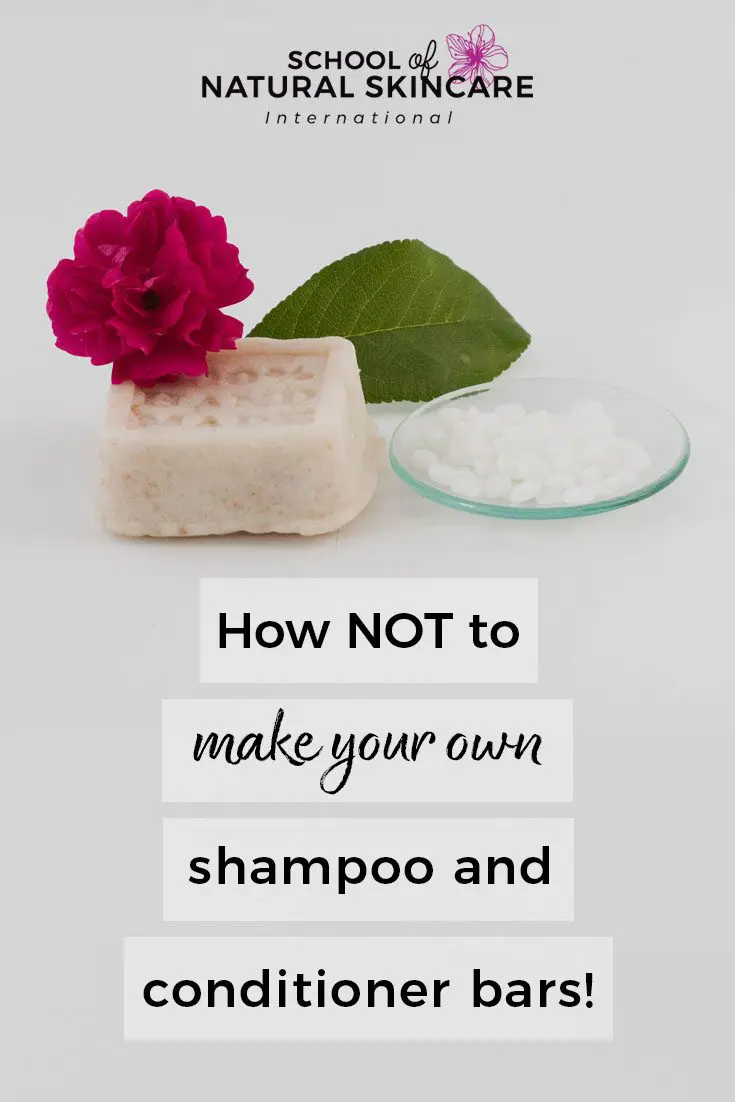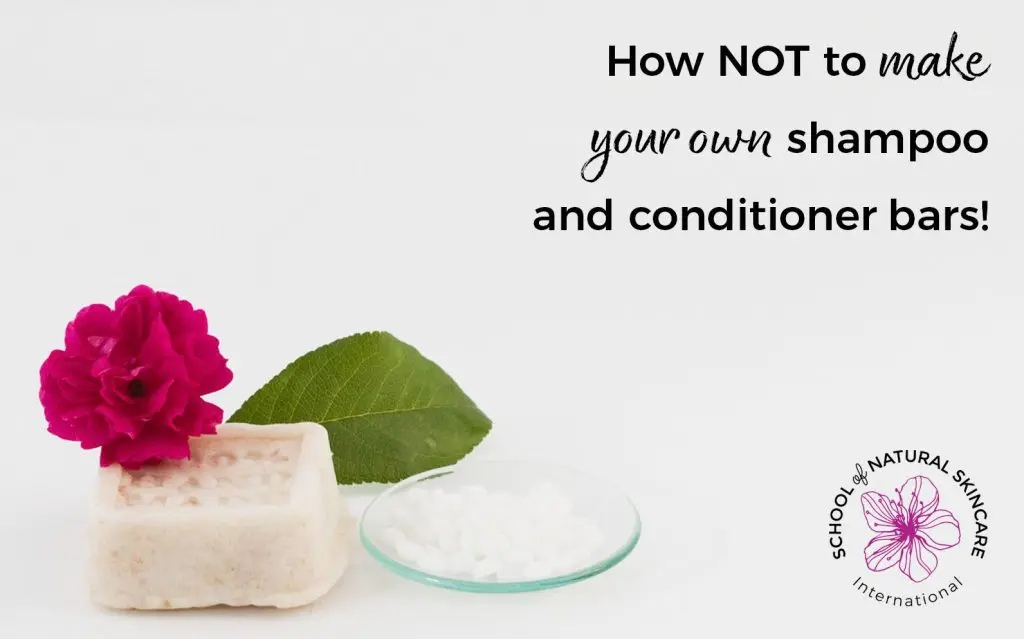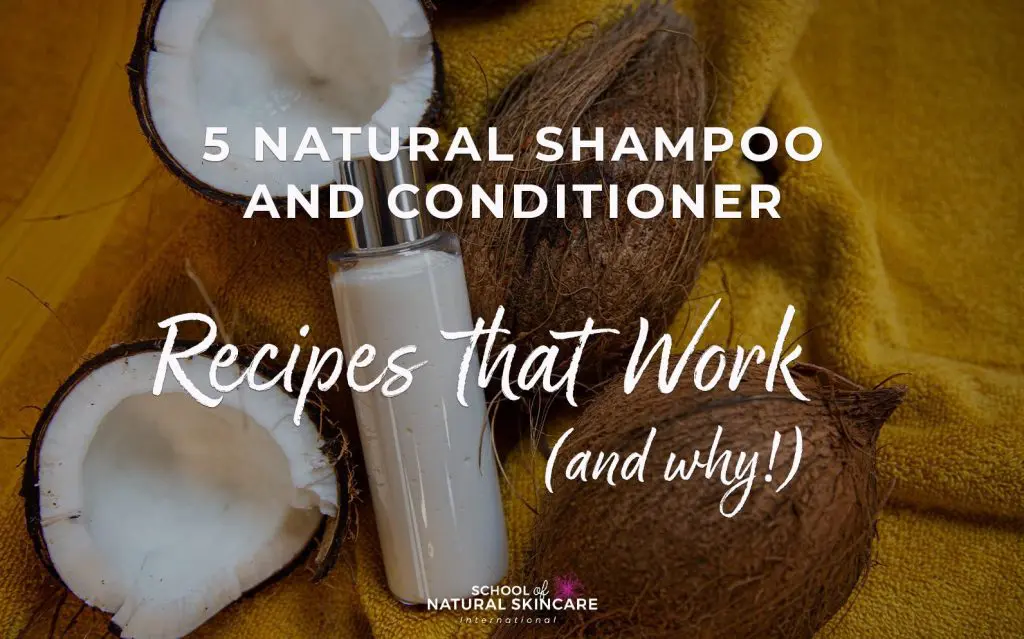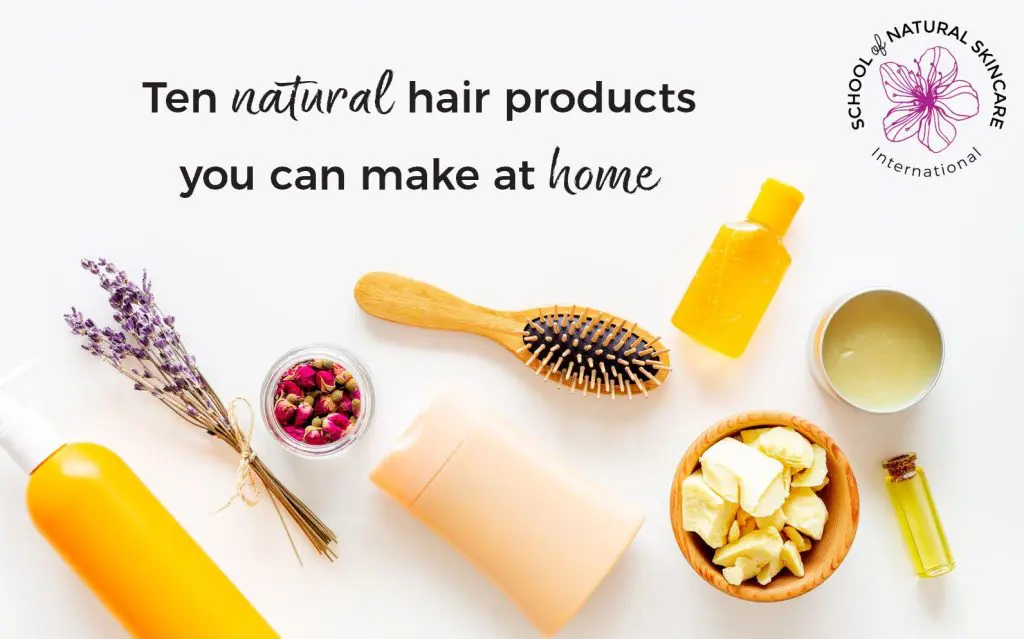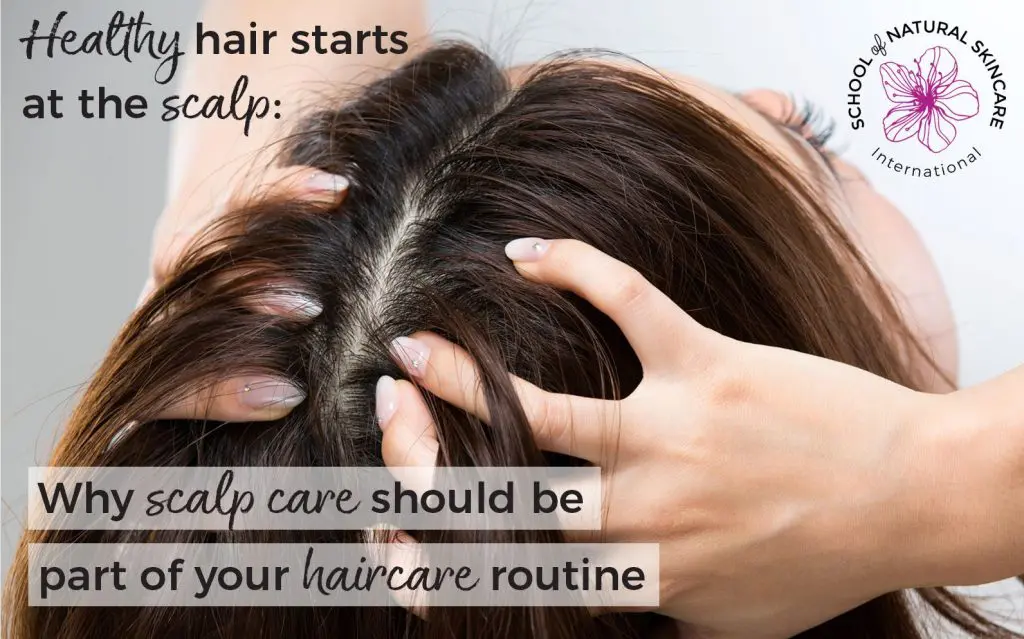We’ve spoken many times about the importance of knowing how to spot an unsafe skin care recipe before following the ones you find online or in books. Now let’s turn our attention to haircare, and look at some of the DIY shampoo bar and conditioner bar recipes we found while cruising around the web.
DIY haircare recipes may appear at first glance to use natural, familiar ingredients, but it’s important to analyze them carefully before use.
Will they work? Are they safe? Why, or why not? Let’s dive in and see!
While not intended to be a criticism of any particular blogger or site mentioned, we hope that you can learn why certain ingredients, techniques, and formulation must-haves are essential by studying where each of these don’t quite hit the mark.

DIY Shampoo Bar Recipes
First up are three examples of soap bars which have been offered as shampoo bars—this one, from DIY Natural, one from Wellness Mama, and one from Maple Holistics.
At first glance, these don’t look so bad. Coconut, olive, avocado, castor, and palm oils all can provide wonderful benefits to skin and hair, but in these recipes, they are part of a chemical reaction. And, the thing to remember with bars and recipes such as these is that it’s not just about the individual ingredients you put into them, and what they do in isolation, but about the overall chemical reaction produced by combining them. And all three of these recipes produce soap bars, not shampoo bars.
How can we tell? Well, the use of lye in each of these is a dead giveaway. The process of saponification takes place when a fatty acid (usually an oil or a fat) is combined with a base (lye, also known as sodium hydroxide) to create a salt. The salt which is produced—the soap—has a higher pH than what is suitable for shampoo bars. Despite all of the oils and butters and fats used in these soap recipes, they will, over time, cause damage to the hair, because of this unsuitable pH.
Next, this DIY shampoo bar from PopSugar has a similar problem. It begins with “1 pound oatmeal melt-and-pour soap base,” and adds some oils, essential oils, and coloring. Again, this is a soap. It might be a really nice soap that smells great, but it’s a soap. And depending on the soap base used, the pH might not be appropriate.
Some other problems to highlight with this recipe, on top of this? All of the added oils will likely make the bar quite greasy, instead of cleansing. And food coloring is a bad idea in cosmetic products (and often, is not even legally permitted!) as it may cause staining of the skin. And of course, none of these four recipes so far have been proper formulations, given in percentages, and none of them have included any preservatives, which leaves the door wide open for any microbial growth when it sits in your shower.
You can see that even with the presence of natural ingredients and good-for-you oils and butters, the overall effect will not produce the desired result.
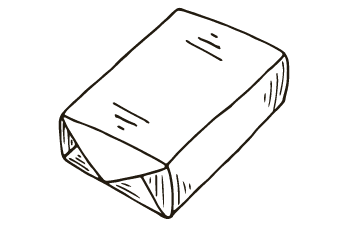
DIY Conditioner Bar Recipes
Last time we checked, all of the DIY conditioner bars we found were really just lotion bars, but thankfully, that doesn’t seem to be the case in our most recent search. DIY conditioner bars are less common at the moment, but with the rise in popularity of shampoo bars, we expect there will be more people looking to make and buy conditioner bars in the future.
Taking a look at the ones we did find, most of them are pretty good. This one, from Hair Treatments Talk, does contain conditioning ingredients, but since it’s not written in precise units like grams and percentages, we don’t know the exact ratio of the ingredients. Using mixed measurements, like cups, tablespoons, and so forth, can lead to an inconsistent finished product.
This DIY conditioner bar recipe from Her Packing List has a good choice of ingredients as well, with measurements given in grams and percentages, but is missing a preservative. We’ve said it before, and we’ll say it again: Preservatives are important! There’s no point in making a lovely, natural beauty product, only to invite some microbes to the party.
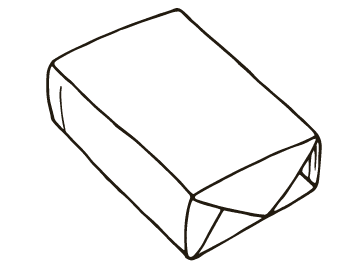
Final Thoughts
Even the most well-intentioned natural beauty enthusiasts still can sometimes provide inaccurate information. They may not know the science behind hair, scalp, and skin care, and why the approach to each isl different. We think that a lot of these inaccuracies start from a very positive position of returning to a natural, sustainable, more ethical way of living, avoiding chemicals and things that may seem to be harsh and synthetic. And we totally get that! The important thing is to do it correctly, so you end up with a product that does what you intend it to do. It’s okay to keep learning, to expand your skills and knowledge, and try to make the best products—not just for you, but for the environment, too.
Soap and shampoo aren’t the same thing. The pH of your haircare and skin care products is important! Proper formulation methods lead to clearer and more consistent results, and preservatives keep your products nicer, longer.
If you’re interested in learning more about natural haircare, you can start by checking out some of our other articles on the subject. Make your own solid shampoo bar, or learn more about the difference between formulating haircare and skincare products. Or, if you want to really kickstart your learning, check out our Diploma in Natural Haircare Formulation. If you’re serious about learning more, or want to offer haircare products in addition to your current skin care brand, come on over! Learn how to save money and time by formulating haircare products safely, naturally, and professionally, right from the start.
Free Training
Become a Natural Haircare Formulator
There are so many myths and mistakes online about haircare formulation—many of which can actually damage your hair.
Learn the professional way to formulate natural and organic haircare products with our free email training series.
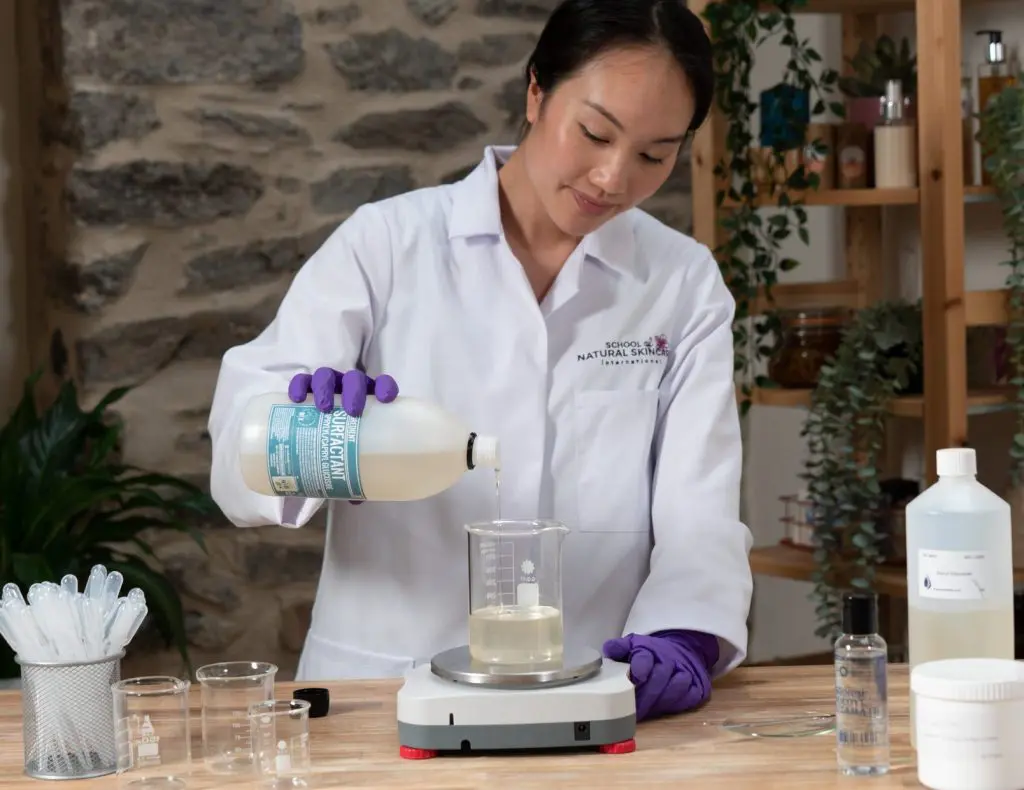
Exclusive for our newsletter subscribers. Sign up now!
We look after your data in accordance with our privacy policy.
What you’ll learn:
- The essential ingredient you must include in a shampoo.
- Five natural shampoo recipes that won’t work and why.
- How to avoid SLS – and gentle, natural alternatives.
- The difference between making haircare products and skincare products.
- How NOT to make your own shampoo and conditioner bars.
Exclusive for our newsletter subscribers. Sign up now!
Enjoyed this blog post? Save this image below on Pinterest so you can be sure to remember!
